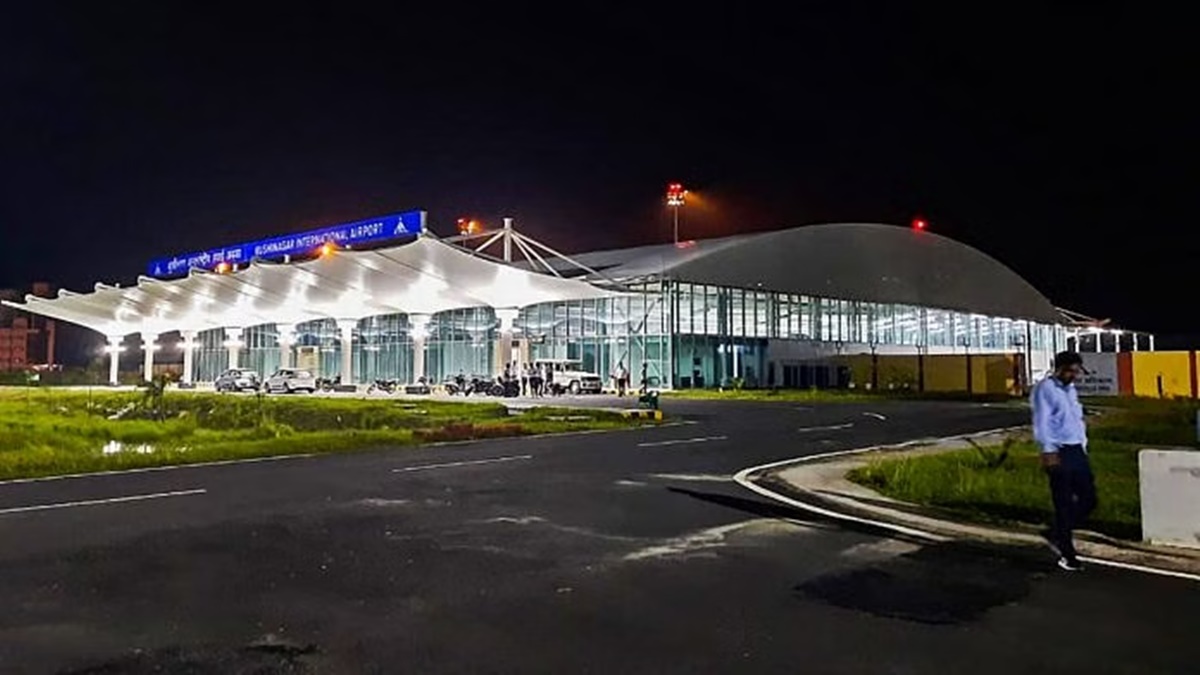The government’s ambitious push to build new airports in smaller centres is hitting turbulence, with several of these facilities struggling to attract traffic and some turning into ghost airports. Despite heavy investment in infrastructure, newer airports like Kushinagar in Uttar Pradesh and Sindhudurg in Maharashtra remain largely inactive, as airlines scale back operations citing low passenger demand.
The Union Territory of Pondicherry, for instance, did not see a single scheduled flight for eight consecutive months this year. The dry spell ended only on December 20, when a 78-seater turboprop flight from Bengaluru landed at the Pondicherry airport. Marking its arrival with a ceremonial water cannon salute, the IndiGo flight underscored the irregularity of air traffic at such locations.
Kushinagar International Airport, inaugurated in October 2021 as one of 12 greenfield projects under the government’s ambitious infrastructure drive, has been without flights since April. Built to connect eastern Uttar Pradesh and neighboring Bihar, the airport was also expected to serve Buddhist pilgrims but now sits idle.
Recent data from the Airports Authority of India (AAI) reveal a similar fate for other newer airports, such as those in Kurnool (Andhra Pradesh), Pakyong (Sikkim), and Sindhudurg (Maharashtra). Solapur Airport in Maharashtra, after a Rs 65 crore revamp, also remains dormant.
While Sindhudurg was intended to rival Goa’s coastal tourism with its pristine beaches, Kushinagar aimed to boost religious tourism. But poor demand and unviable operations have forced airlines like SpiceJet and Alliance Air to discontinue routes under the government’s regional connectivity scheme (RCS) – Ude Desh Ka Aam Nagrik or Udan.
Simran Singh Tiwana, CEO of Star Air, India’s largest regional airline, highlights the challenges: “The ticket pricing cap under Udan has made air travel more affordable for tier-2 and tier-3 cities. However, maintaining consistent passenger demand on certain routes remains a challenge”.
Star Air, with a fleet of nine aircraft, is planning to expand with 20 Embraer jets. Yet, Tiwana notes that smaller regional airports often serve areas with low populations and limited tourist inflows, making it difficult to sustain frequent flights.
Disruptions caused by the Covid-19 pandemic, global aircraft engine issues, and the shutting down of some airlines have exacerbated the problem. Minister of state for civil aviation Murlidhar Mohol told the Lok Sabha that these factors, combined with weak passenger demand, have led to the discontinuation of several routes.
Despite these challenges, the government remains optimistic. Under its Viksit Bharat 2047 vision, India plans to more than double the number of airports to 350 from the current 157. Site clearance has already been granted for nine new greenfield airports, including those in Alwar (Rajasthan), Singrauli (Madhya Pradesh), and Parandur (Tamil Nadu).
The push for regional air connectivity continues, but the fate of airports like Kushinagar and Sindhudurg underscores a hard truth: infrastructure alone cannot generate demand. Without sustainable passenger volumes, these facilities risk becoming high-profile but underutilised assets.






